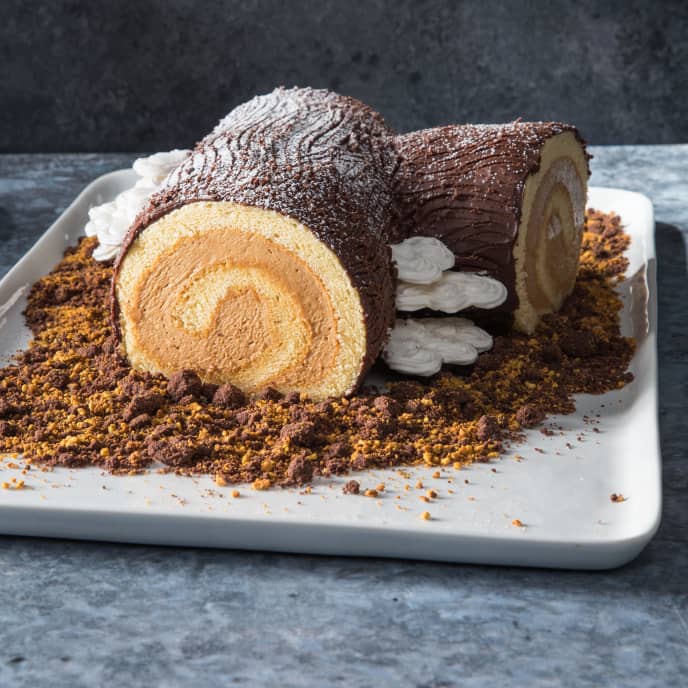The Foodies Journal: Holiday Edition
December 22, 2019
It is finally the season to enjoy joyous times with family and friends, and eat delicious sweets, from homemade apple pies to delicious cakes, and celebrate traditions that bring people together.
This season of holiday celebrations we will be focused on the Yule Log cake, and its history of traditions. The Yule Log is a rolled-up sponge cake filled and frosted with chocolate buttercream to make the outer look of the cake seem like a log. The cake may also be decorated with edible decorations like meringue mushrooms, marzipan holly sprigs, spun sugar cobwebs, and any other edible decor that could remind you of a forest theme.
However this tradition of making a Yule Log cake didn’t begin as making the cake, but burning logs. This tradition stretches back to Europe’s Iron Age (before Medieval Era) when Celtic Brits and Gaelic Europeans would gather to celebrate and welcome the winter solstice at the end of December. They would feast to celebrate eating treats, hams, and all other delicacies. This celebration stretches out to a full 12 days. During those days the logs from years prior burning would slowly be fed back into the fire until the new year’s log was added for this year to cleanse the air and urge spring forward. However, traditionally someone who is pure and has “clean hands” was only permitted to do the re-lighting. The logs ashes were very valuable and claimed to have medical benefits, guard against evil, and if you throw the ashes out on Christmas day it was said to be unlucky. However, around the world how people celebrate this can be different in many details.
In Provence, France the whole family would help cut down log and do the ceremony, and instead of just putting the whole log into the fireplace once the family would burn the wood in pieces each night. If after the twelfth there are any leftovers they would save it and keep it safe until next Christmas to protect against the chances of lightning since many things back then were made of wood rather than what we have today. Then we have Cornwell, UK where the log is called “The Mock”. The process for their wood is to dry it out, then take the bark off of it, and in some cases, the wood would come from barrel makers when the wood couldn’t be used and instead can be used for the Yule Log. In Devon and Somerset, UK instead of an entire log they actually just use multiple Ashwood twigs. This odd change in material isn’t just of choice, but of a religious legend, that says that when Joseph, Mary, and Jesus were very cold when the shepherds found them on Christmas night, the Shepherds got lots of twigs to keep them warm.
However, in the Advent of Christianity the tradition continued, but of a smaller scale. Instead of logs all of the 12 days they burned one on Christmas day, and eventually smaller hearths of wood became normal. Even though these became smaller-scaled there was an upside to it, as small hearths were perfect for making a cake. The first person to actually make the cake is unknown, but the estimated time period can be hypothesized by the individual ingredients of the cake leading to around the 1600’s. Along with the hypothesis, one ingredient Marzipan was appearing on medieval tables everywhere. The sponge cake used as the base for this cake is the oldest kind of cake to this day. The first record of a recipe for this cake can be found in Gervase Markham’s Book “The English Huswife”.
In Present-day, if we were searching the Yule log cake we would find a delicious rolled sponge cake filled with frosting and the outer frosting being chocolate with buttercream to make the outer layer seem more bark-like. Along with that it is decorated with edible decors such as Meringue Mushrooms, Marzipan holly sprigs, spun sugar cobwebs and any other edible decor that can remind you of the wilderness. This concludes the “Foodies Journal: Holiday Edition” with a farewell, and a wish for all of you to enjoy an amazing holiday with family, and possibly a delicious Yule Log cake.






























































































































Anna • Jan 6, 2020 at 10:25 am
Good job! I love your article!